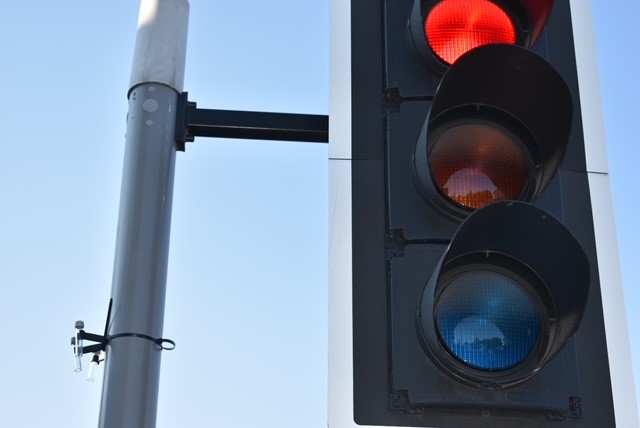UK Wide
We provide sampling and consultancy services throughout the UK and Ireland
Affordable
We are happy to provide you with an obligation free estimate for work
How it works
About this service
Roadside NOx Measurements: Unveiling Air Quality and Environmental Impacts
Air pollution is a pressing global concern, with adverse effects on human health, ecosystems, and the environment. Among the pollutants of concern, nitrogen oxides (NOx), including nitrogen dioxide (NO2), play a significant role in contributing to poor air quality. Roadside NOx measurements have become a critical tool in understanding urban air pollution, assessing the effectiveness of regulatory measures, and developing strategies to mitigate the environmental and health impacts of vehicular emissions.

Understanding NOx and Its Sources:
Nitrogen oxides, particularly nitrogen dioxide (NO2), are a group of reactive gases that are primarily produced during combustion processes. In urban areas, vehicular emissions are the primary sources of NOx. The combustion of fossil fuels in vehicles, especially diesel engines, releases nitrogen oxides into the atmosphere. Once in the air, these gases can undergo complex chemical reactions to form secondary pollutants, such as ozone and particulate matter, which further degrade air quality.
Importance of Roadside NOx Measurements:
Health Impact: NOx exposure is linked to a range of adverse health effects, including respiratory issues, cardiovascular diseases, and impaired lung development in children. Monitoring roadside NOx levels provides valuable data on potential health risks for individuals living, working, and commuting in urban areas.
Air Quality Assessment: Roadside NOx measurements offer insights into localized air quality conditions near traffic sources. This data is essential for evaluating compliance with air quality standards and identifying areas of concern where pollutant levels exceed permissible limits.
Environmental Monitoring: NOx emissions contribute to the formation of ground-level ozone, a major component of smog that can harm vegetation, damage crops, and disrupt ecosystems. Measuring NOx levels at roadside locations helps assess their contribution to ozone formation and its ecological impacts.
Policy and Regulation: Roadside NOx measurements provide essential data for policymakers and regulatory authorities to develop effective strategies to reduce air pollution. Monitoring helps evaluate the impact of existing regulations and guide the formulation of new policies to achieve cleaner air.
Methods for Roadside NOx Measurements:
Our Roadside NOx measurements follow the guidance in the Department for Environment Food & Rural Affairs (DEFRA) ‘Local Air Quality Management Technical Guidance’. Sampling uses Palmes-type diffusion tubes containing a layer of TEA absorbent. These pick up the nitrogen dioxide in the air at a known flow rate.
The air quality assessment usually needs three sample tubes per test point. We fix these tubes to lamp posts or lights nearby. There may be more test points per site. We position them between 2 and 2.7m high in such a way that the air can circulate freely around them. In the same way, we also ensure that they are not in an area of high air turbulence.
We usually put the tubes out on the dates that the DEFRA diffusion tube calendar specifies and they are then left in place for a period of about a month. Then we remove them on the next date that the diffusion tube calendar specifies. We repeat this process over several months until the air quality assessment is complete. A laboratory with UKAS accreditation then analyses the tubes. When we receive the results, we adjust them to calculate an annual average for the site.
Sources of interference can often affect the tubes and cause a bias (an under or overestimation). Therefore we correct the results by multiplying them by a bias correction factor.
Challenges and Considerations:
Variability: Roadside NOx levels can vary greatly depending on traffic patterns, meteorological conditions, and time of day. Long-term monitoring is necessary to capture these variations accurately.
Local Influences: Roadside NOx levels are influenced by nearby emissions sources, including vehicle types, traffic density, and industrial activities. Understanding these local factors is crucial for interpreting measurement results.
Data Interpretation: Interpreting roadside NOx data requires expertise in atmospheric science and pollution modeling. Integrating measurements with other air quality data provides a comprehensive understanding of pollution sources and trends.
Future Outlook:
As concerns about air quality and environmental impacts continue to grow, technological advancements are shaping the future of roadside NOx measurements. Integration with other data sources, such as traffic flow data and meteorological information, can enhance the accuracy and relevance of measurements. Additionally, the deployment of sensors in smart cities and the development of real-time monitoring networks enable policymakers and citizens to access up-to-date air quality information.
Conclusion:
Roadside NOx measurements represent a critical tool in the ongoing battle against urban air pollution. By accurately assessing nitrogen oxide concentrations near traffic sources, Synergy Environmental Solutions can provide vital insights into air quality, public health risks, and the effectiveness of pollution mitigation efforts. As cities expand, urban planning and policy development should integrate data from roadside NOx measurements to create healthier, more sustainable environments. Through a combination of accurate measurements and informed decision-making.
Further information is available below
Defra Website
UK Government – how planning can take account of the impact of new development on air quality
Nitrogen Dioxide in the United Kingdom

Available Environmental services
We’re happy to answer any questions you have, or provide you with an obligation free estimate for work. Just send us a message!
01782 614236 or [email protected]
Stack Emission Monitoring
Sick Building Syndrome
Indoor Air Quality Testing
Roadside NOx Measurements
Environmental Noise Monitoring
Get in touch
Contact
Synergy Environmental Solutions provide
sampling and consultancy services
throughout the UK and Ireland
We’re happy to answer any questions you have,
or provide you with an obligation
free estimate for work.
Just send us a message!
Email: [email protected]
Tel: 01782 614236



